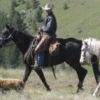-
Posts
1,976 -
Joined
-
Last visited
-
Days Won
80
Everything posted by DANRVAN
-

Non-tax-preparer question: Do I still qualify for the home office deduction?
DANRVAN replied to Eric's topic in General Chat
He is okay per Reg 1280A-2(g)(1). -

Non-tax-preparer question: Do I still qualify for the home office deduction?
DANRVAN replied to Eric's topic in General Chat
Only for the percent of use for your Free Lance business that you are doing as a nonemployee. As cbslee pointed out, you can no longer deduct the portion related to employment due to TCJA. Your continued use an an employee does not trigger the exclusive use disallowance. Reg 1280A-2(g)(1) explains that exclusive use means the office cannot be used for nonbusiness purposes. Therefore you still meet the exclusive use test even though your employee use is no longer deductible since it is not considered personal use. What you need to do is allocate the amount of time spent in your office for your free lance business and deduct that portion. ATX has a window for inputting the percent of each business. -
So we have a responsibility to maximize SS vs minimize income tax for client's employees?
-
So your response to client in OP would be......"I don't know"......"I haven't kept up on that topic"..."it is cheaper for you to add to wages than to pay me five minutes to research"....? Or maybe employee's tax preparer will catch it and get back to you.
-
If it was only that easy! Actually the year of donation deduction is the dollar amount of the initial contribution less the present value of the annuity distributions back to the donor based on life expectancy.
-
That does not appear to be a limitation by the IRS per the memo in regards to reimbursements.
-
Notice 2011-72 _ResourcesAndTools_hr-topics_compensation_Documents_sbse-04-0911-083 (1).pdf The notice is 2011-72 and the memo is attached as pdf above. The memo directs examiners to follow the same business use criteria of employer provided cell phone (per the notice 2011-72) in situations involving reimbursements to employee's for business use of personal cell phones. The memo states that the reimbursement for business use should be done in a reasonable manner. Given all the potential business applications of a cell phone, $20 sounds reasonable based on fact and circumstances.
-
So you are not aware of the 2011 IRS Notice that pertains to employer provided cell phones and the related IRS memo that extends business use provisions of the notice to reimbursements of employee cell phones? I do not have time to post details now.
-
Suggest you review Reg. Section 1.132-6(b) and note reference to frequency.
-
Assuming this is an ordinary and necessary business expense, why would you not recommend treating as a reimbursement under an accountable plan?
-
your are right, 5 days
-
Isn't that a 4 day window to resubmit a rejected e-filed return, Oct 19 2020 for this year?
-
Actually you were leading this discussion down the path to a 382 limitation. Hence my abrupt heading out the door to go build fence reply. A 50% change in ownership of a loss C-corp will kick in a section 382 limitation. The 50% change can come from 1 or more shareholders who ends up owning 5% or more. For example in the post by ILLMAS, if a single buyer purchases 50% or more of the stock section 382 kicks in. Also if 10 buyers purchase 5% each, then 382 kicks in since 50% changed in the hands of a group that ended up owning 5% of more. But if 25 buyers each purchase 4%, then 382 does not apply since the 100% change was made by a group of stockholders owning less than 5%.
-
The tax attributes stay 100% with the C-corp unless you are dealing with a section 382 or 383 transaction.
-

Distributions from complex trust with only rental loss carryforwards
DANRVAN replied to David's topic in General Chat
I didn't catch that. In this case, the 100% of depreciations goes to beneficiaries since 100% of the TIA was distributed to them per the reg. Rev. Rul. 74-530, 1974-2 CB 188 confirms that they are allowed depreciation in excess of their K-1 reported income. -

Distributions from complex trust with only rental loss carryforwards
DANRVAN replied to David's topic in General Chat
If the trust did not have any Trust Accounting Income, then there would be no reporting of depreciation as a separately stated item to the the beneficiaries per Reg 1.167(h)-1(b). -
I will send that link to my client, Thank you!
-
Sounds like good route to go. Probably need to find out the minimum requirements to run QB.
-
Thank you for the suggestion Gail, but not an alternative in this situation.
-
Does anyone have suggestions for an economical laptop capable of running quickbooks? Client is struggling with a barber shop hit by pandemic and some other issues. Thank you for any suggestions you might have. Dan
-
that's it, the step-transaction-doctrine
-
That is correct, I was thinking roughly 22,000 instead of 12,000 as I posted above. There are other possible methods of allocating such as sales or volume per store.
-
Are you aware of the "substance-over-form doctrine"? Why would you not use it to your client's advantage? Looks to me like you would have a gain of about $12,000 if basis is allocated on 30,000 / 130,000 figures.
-
Look at the substance of the transaction. The bakery reduced taxpayers route by a few stores and compensated him $30,000. That is how I would treat it. They went through some extra hoops to get there for legal/admin purposes, but they still have the route minus a few stores + a check for $30,000.
-

Concerning electing to capitalize costs & carrying charges
DANRVAN replied to Corduroy Frog's topic in General Chat
Not knowing the facts and circumstances, I would inquire as to the business purpose in order to justify the expense. Are they holding as a reserve for drought years? Future expansion? An adjoining piece of property bought to avoid new neighbor conflicts ( encroachment of non-farmers) ? In my area there is a high demand for pasture so capitalizing idle ground is not a concern. Mowing unused pasture is unheard of and in most cases not practical due to the terrain and acres involved. I don't believe that is an accurate allocation method. The 20 acres in your example has two components; the land and the timber. You would need to know the value of both to make a reasonable allocation, that was the point of my question. To go further with this, you would also need an estimate of the standing timber volume in order to track the expenses on a board foot basis. Otherwise, how will you know how much to write off when x amount of timber is logged off and y amount is left standing? Do you see a record keeping issue here? For the ranchers with both pasture and timber, grazing is the primary purpose and the timber is incidental. I have never seen an accountant make an allocation in that situation; it is all wrote off. Getting off topic, but I have consulted with foresters to back track basis of timber sales using growth rates and historical sale prices.


